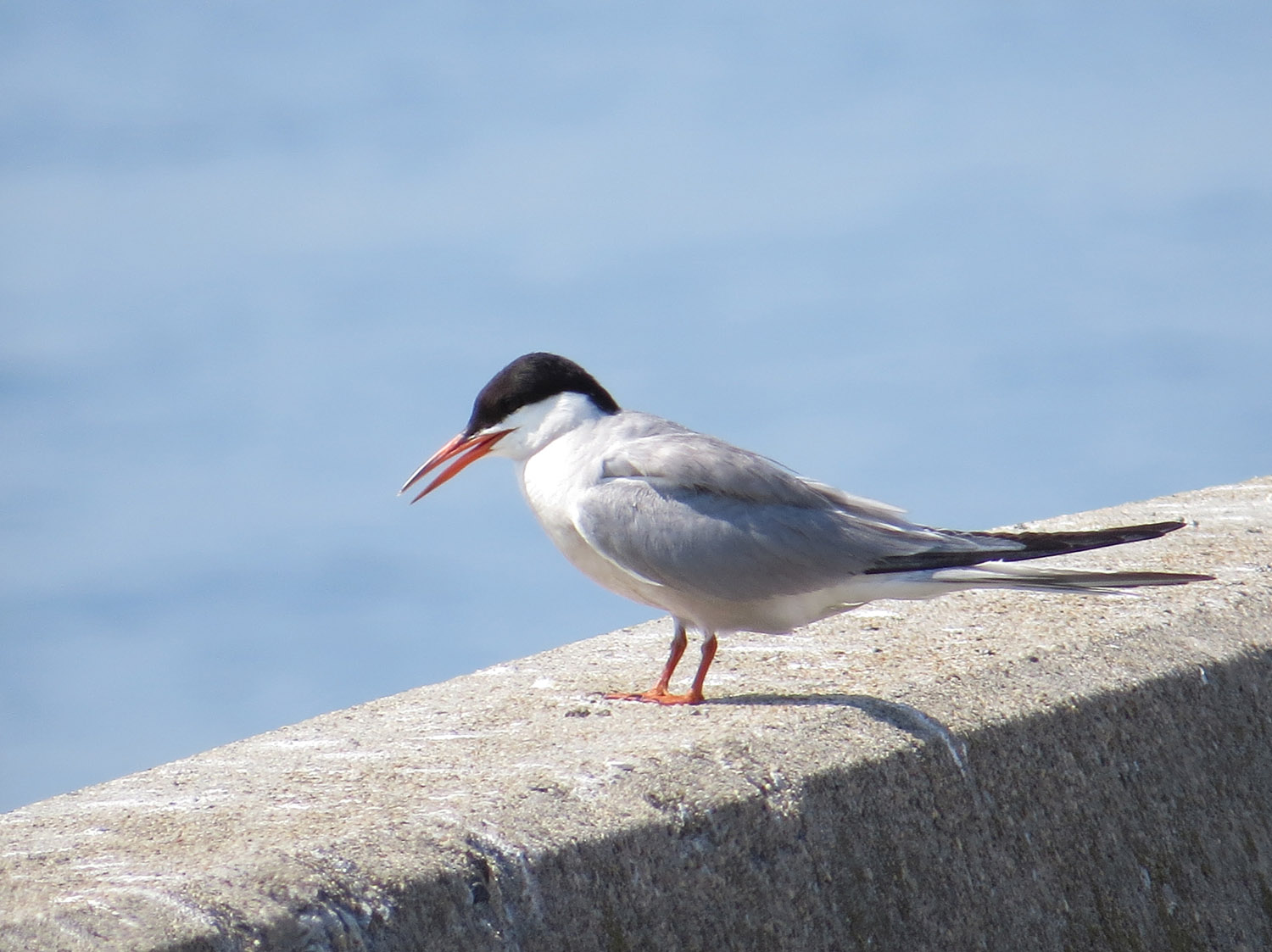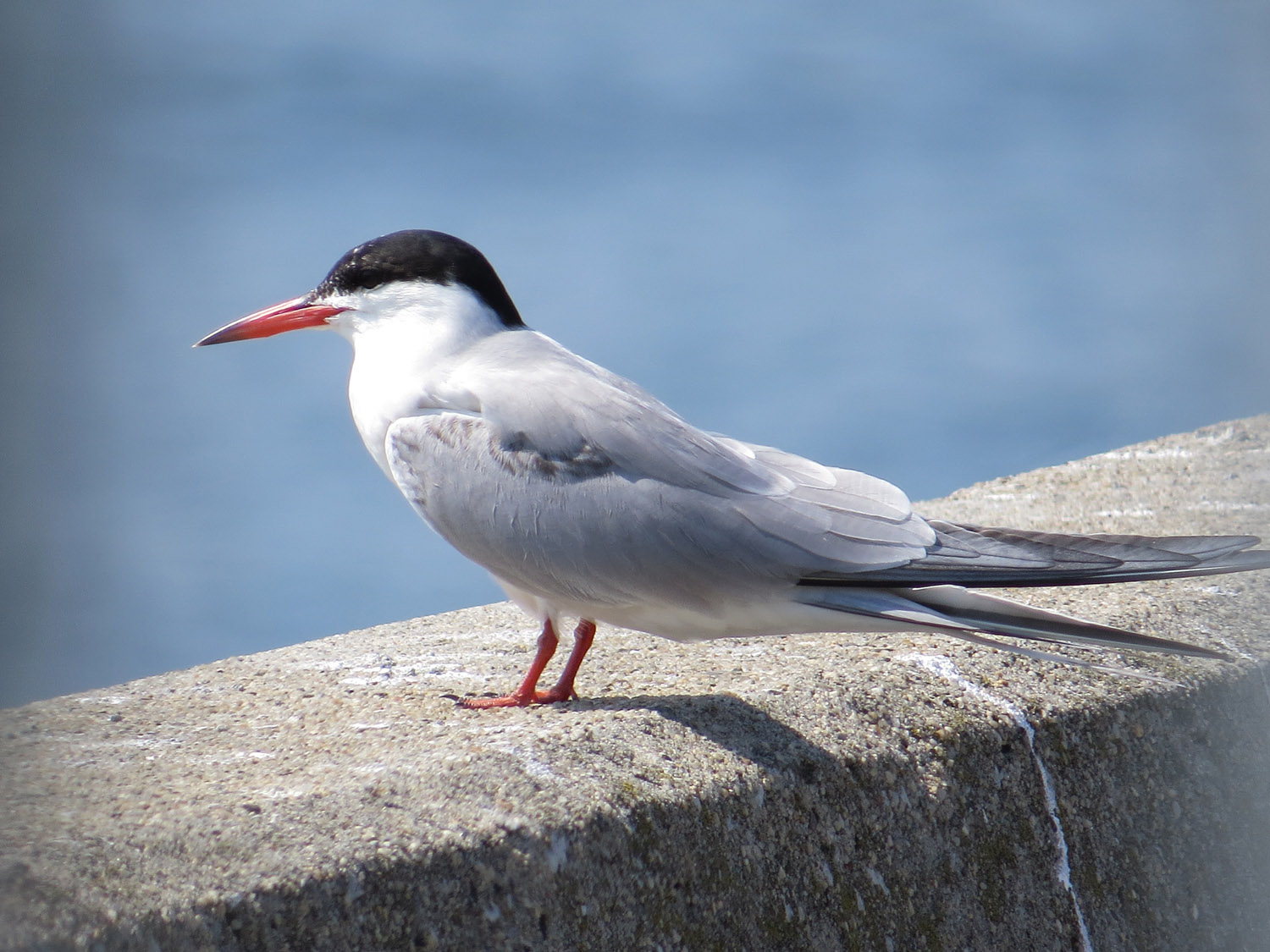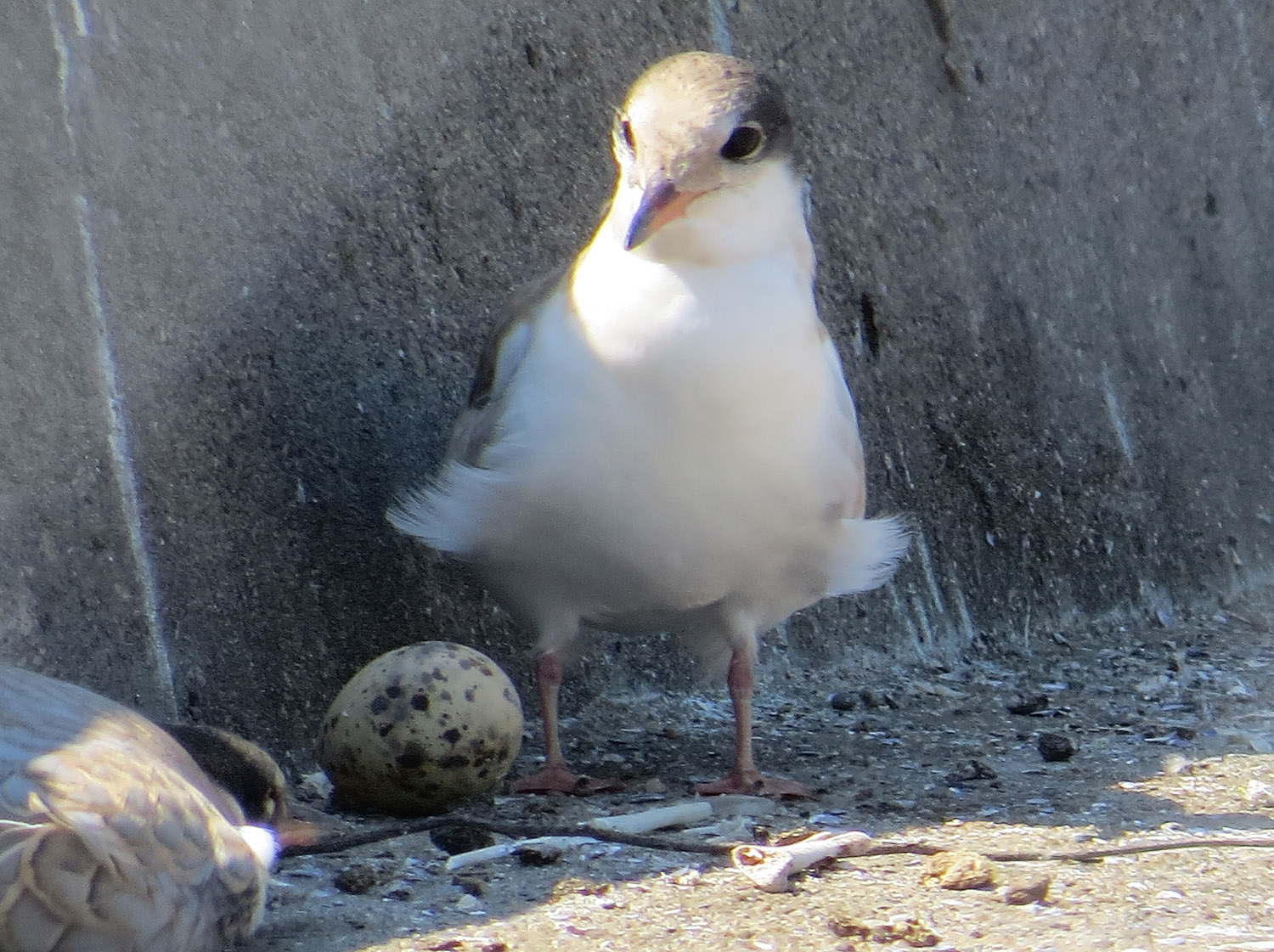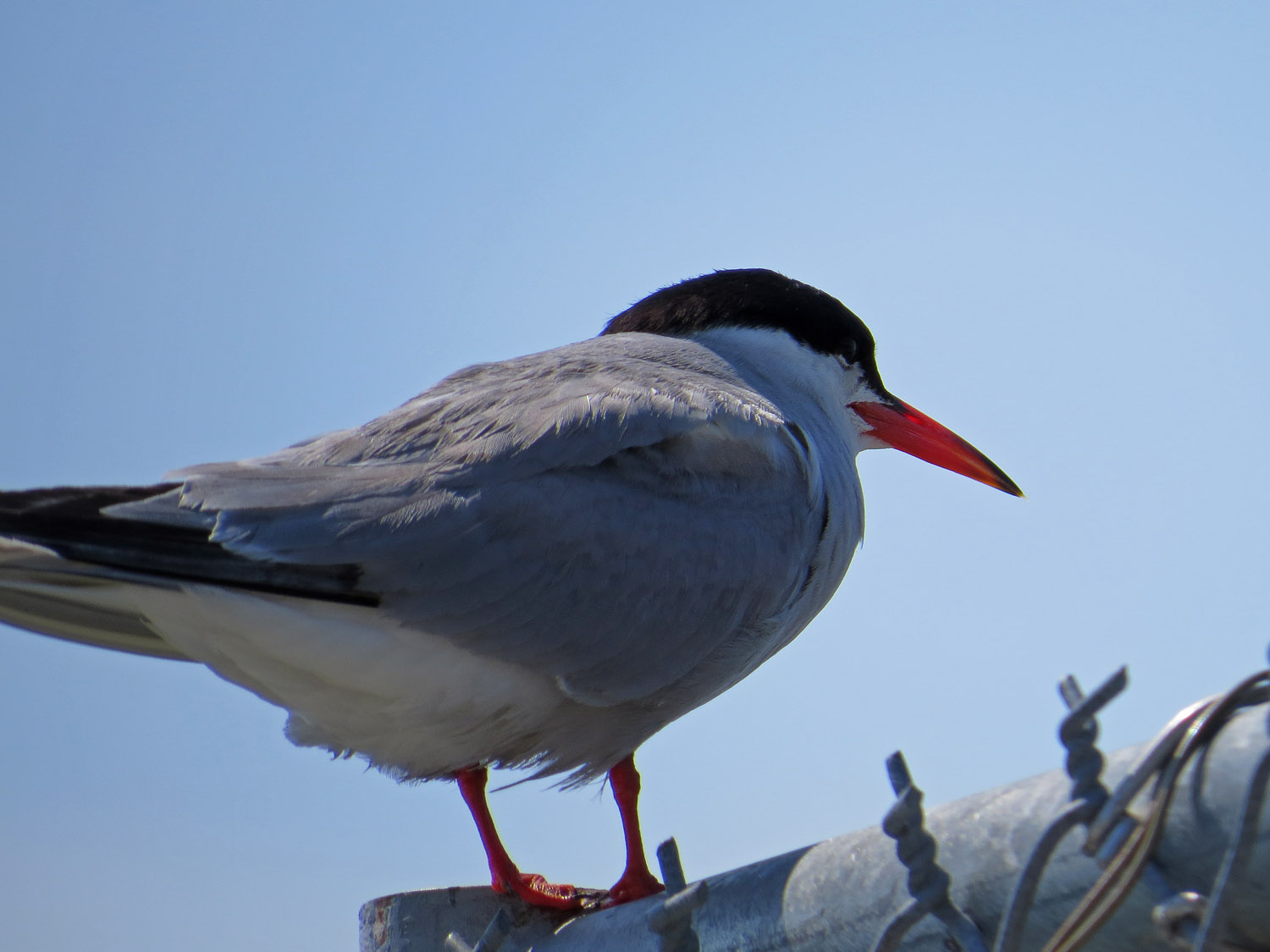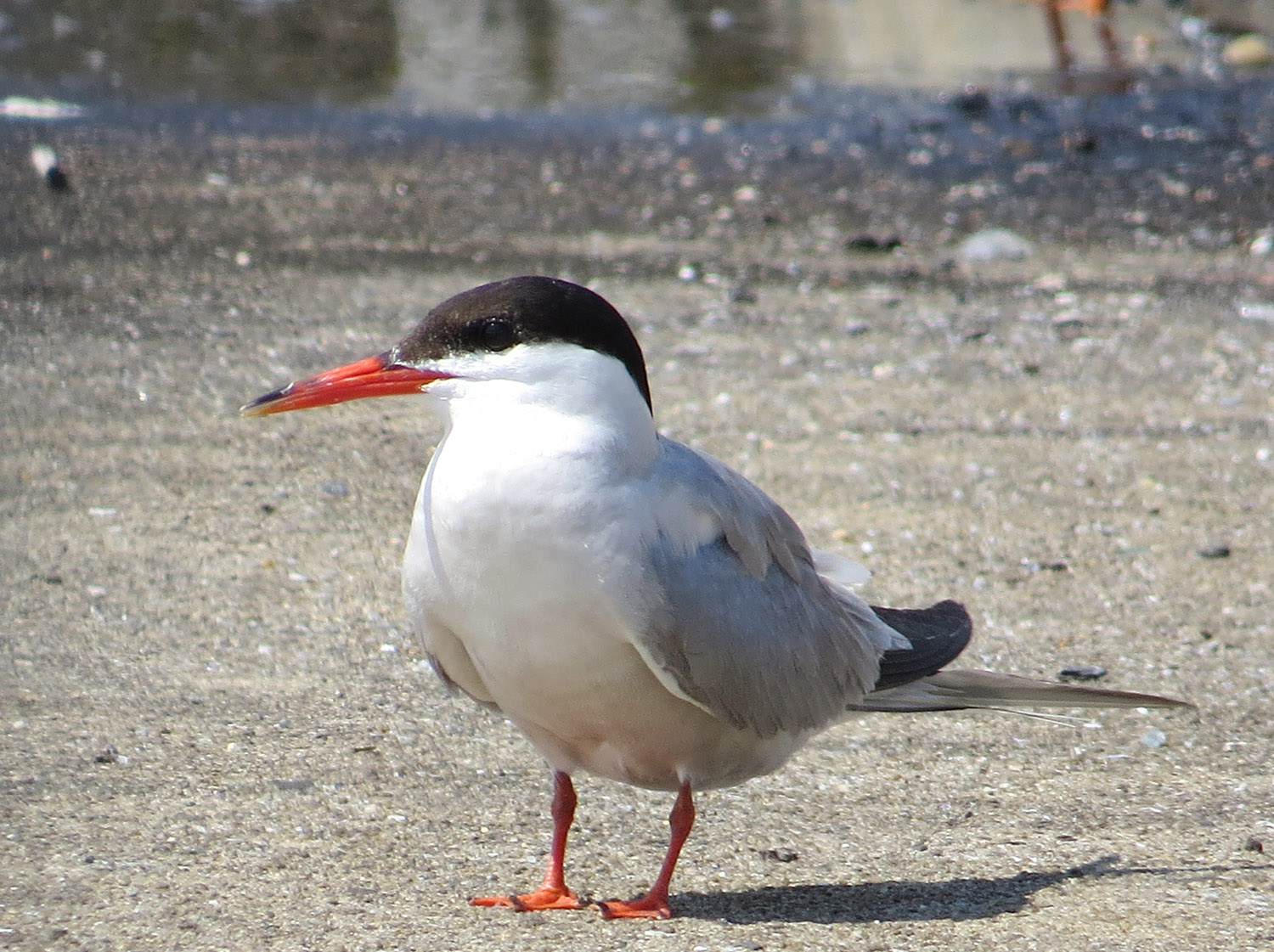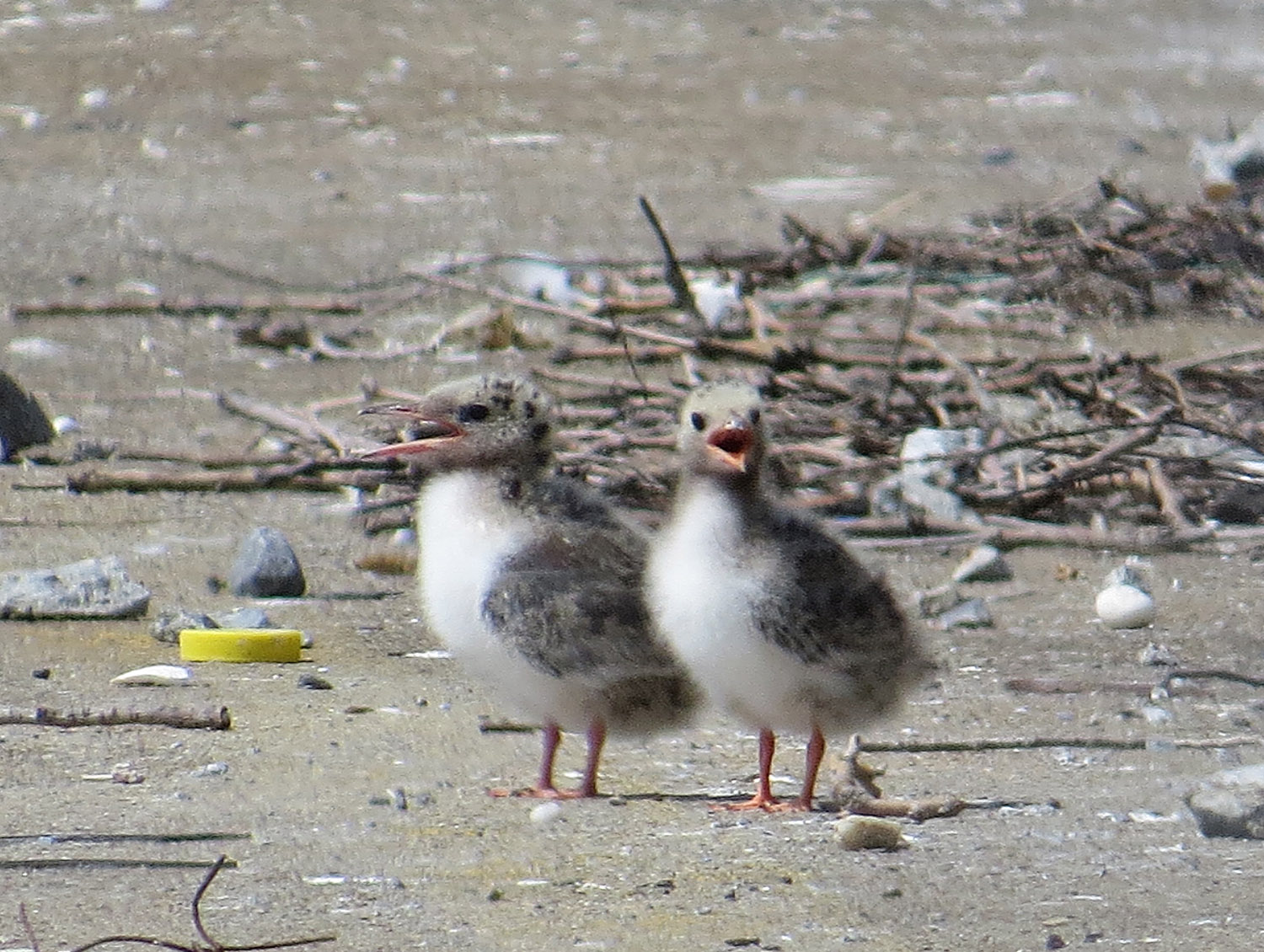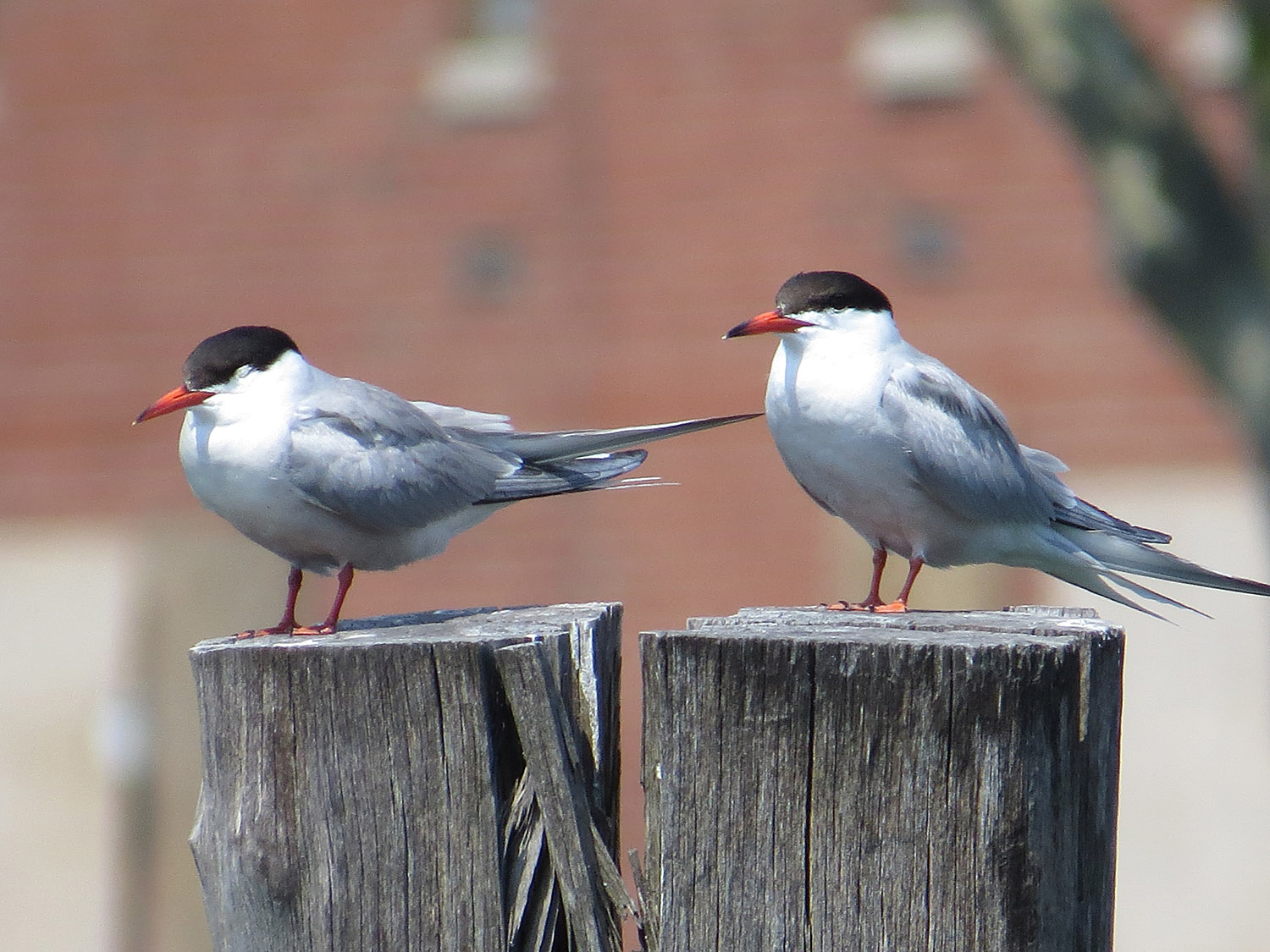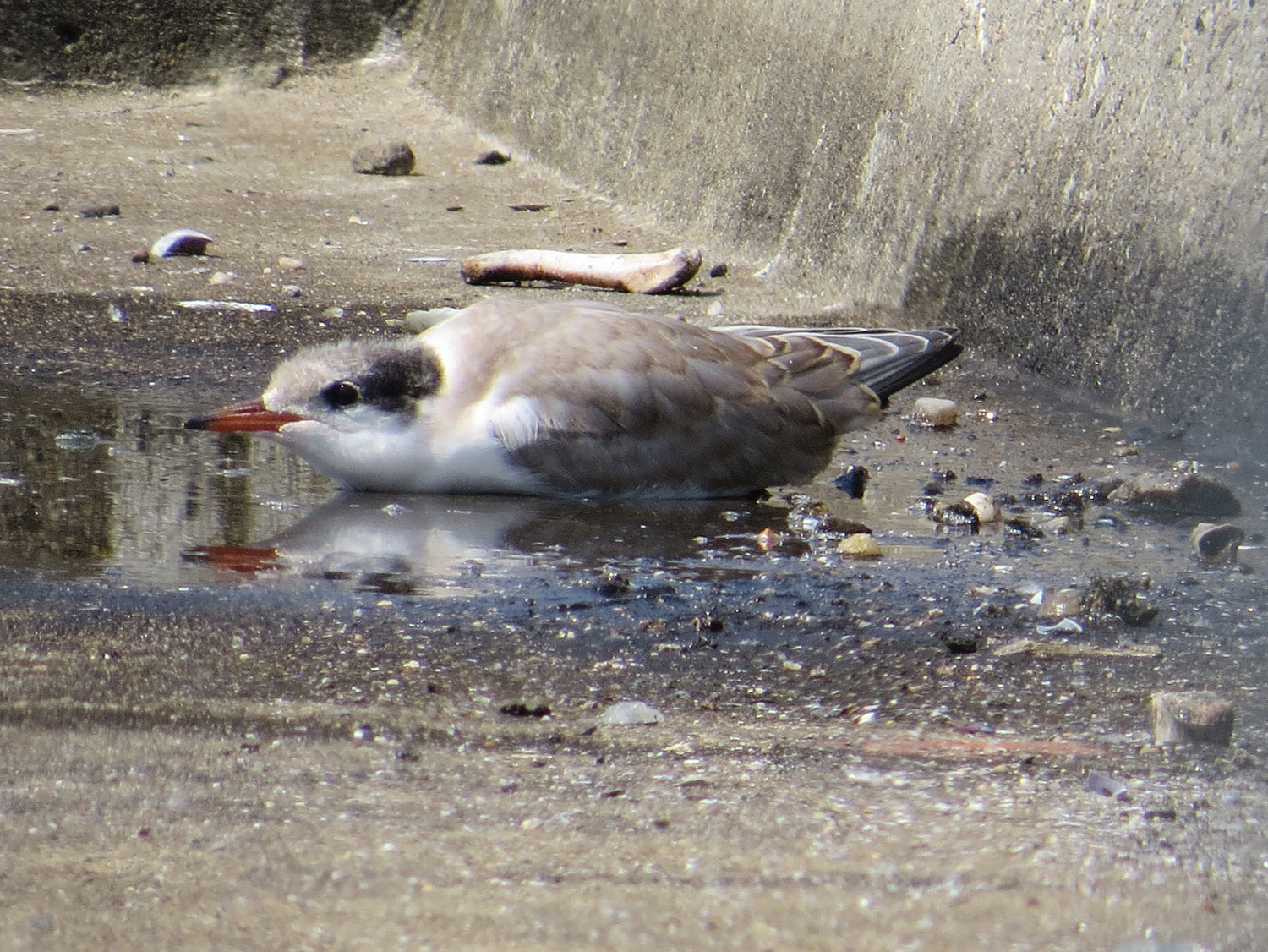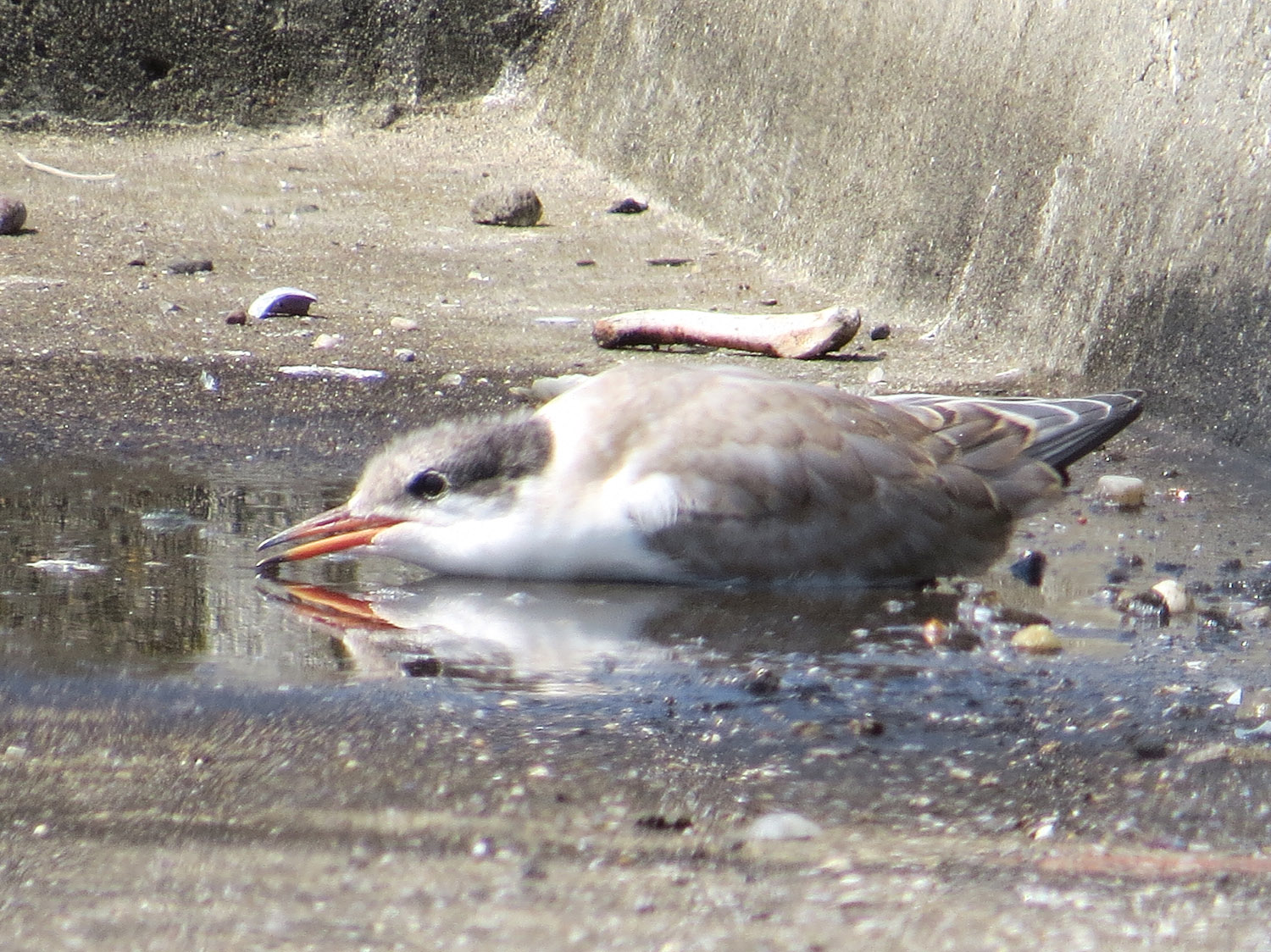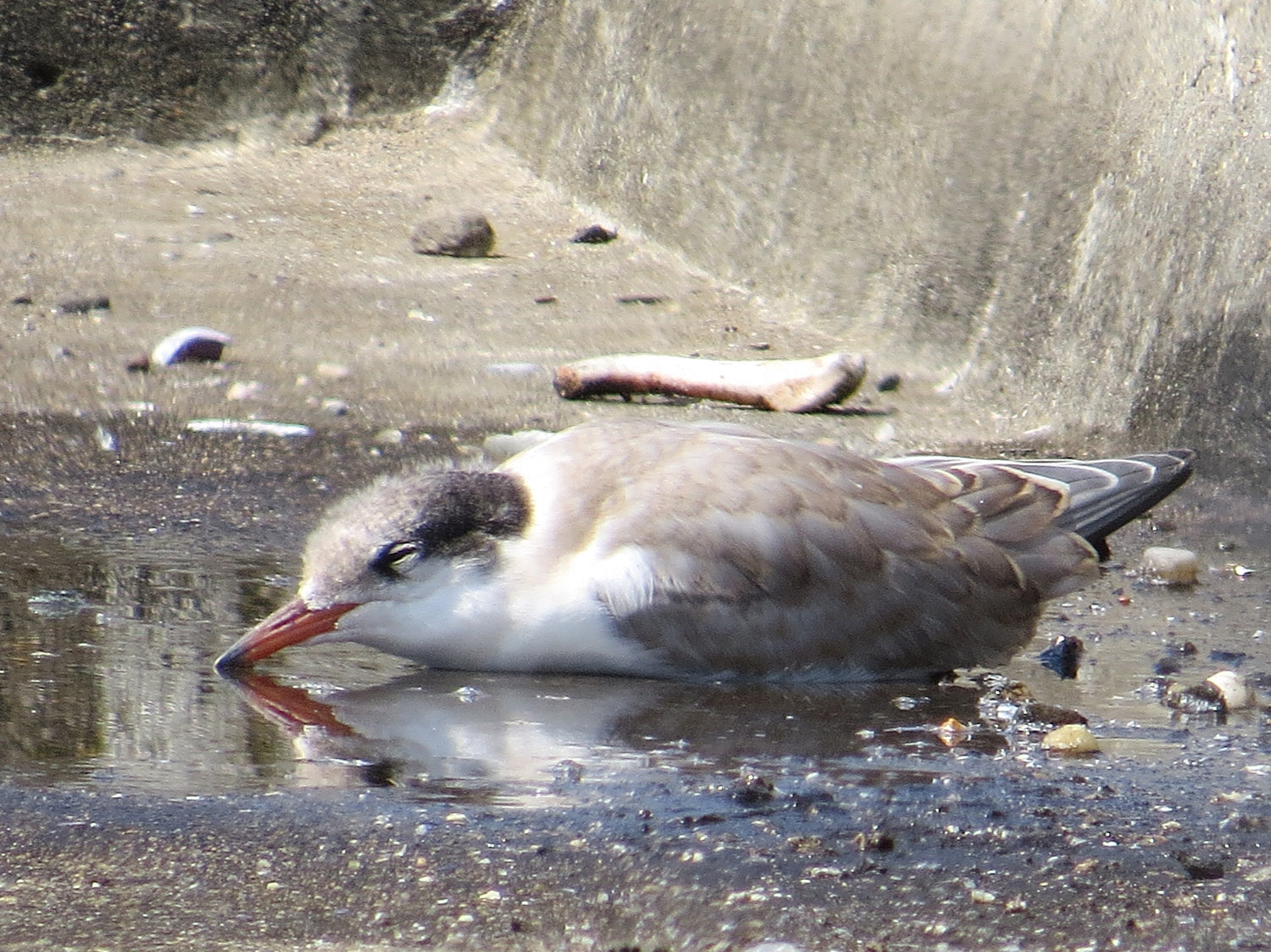We visited Governor's Island on July 17, a very hot day with a very hot sun. Our first stop was the pier with the nesting common terns. The area was fenced off to protect the birds, and we had to shoot our photographs through the fence. But the little birds were a joy to watch as they waited for their parents to fly in with little fish dinners. I was taken with how each parent feeds only his or her own little chicks, and will take off if another chick tries to take the fish.
New York State lists the common tern as "threatened," so the pier on Governor's Island is fenced off so the birds can nest safely.
The state lists the common tern as "threatened," but among the terns, the common tern is the most widespread and abundant in New York. With their blood-red bills and glossy black caps, these birds are very distinctive.
We got to see chicks of various ages. I especially liked the youngster who sought cooling relief in a very shallow little puddle, and the two even younger chicks who pranced around the pier waiting for dinner. I set the Filming the Feathers video from our visit to the terns' own sounds and to music by Alexander Borodin, performed by the Musopen String Quartet.
The terns skim the water in shallow dives to come up with fish that are about 3-4 inches in length. Both parents take on incubation duties. Incubation lasts 21-27 days. The video of the parents' feeding did not come out great, but you can catch a little of it. The photographs of the adults came out better than those of the young terns (they were farther down the pier).
Source: Common Tern Fact Sheet, New York State Department of Environmental Conservation.


